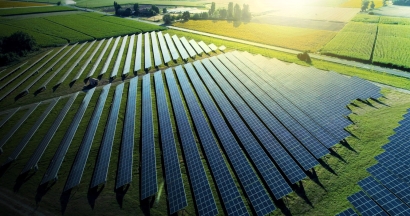
Many people in the agriculture sector and elsewhere balk at opportunities to do things differently unless they have strong assurances those changes will bring benefits. An Oregon State University team investigated the effects of co-developing land for farming and solar energy — the results of their study were undoubtedly impressive. They found this approach could generate 20% of the electricity in the United States while only requiring an investment equaling less than 1% of the annual budget.
Moreover, the results indicated the widespread use of photovoltaic farming could cut 71,000 cars worth of carbon dioxide emissions per year in the country. Additionally, this change would create more than 100,000 jobs in rural communities while only having a minimal impact on total crop yield production.
Chad Higgins — the senior author for the paper associated with this research — clarified that agrivoltaic farming could position agriculture as a solution to problems rather than their cause. He also said this approach would generate money after the initial investment, making it financially viable.
People interested in agrivoltaic farming also don’t necessarily need to put solar installations directly on fields used for growing. Another option is to install them on farm-related buildings. Consider how grain-storage facilities should ideally be located on the farm property or close to it. Then, people can reduce expenses associated with fuel and transportation.
In one real-world collaboration, two companies attached 230 square meters of solar film to a grain silo. People involved with the project believed it would generate approximately 6,700 kilowatt-hours of energy per year. Moreover, the created power would run the grain silo, reducing dependence on the grid.
In another case, a horse barn owner put solar panels on the roof of the 3,500-square-foot property. The goal was for the photovoltaic structure to provide all the electricity needs of the equestrian ranch. Once the system was installed and had operated for approximately five months, the owner had enough evidence to say the results surpassed his expectations.
These examples show how people can embrace agrivoltaic farming even if they lack space to install solar panels. Such applications require careful thought. However, they can generate even more revenue than traditional agricultural practices while supporting a sustainable future.
People are understandably interested in how to prepare crops to deal with climate change as readily as possible. Succeeding in that aim will help bolster food security. A five-year project in Germany will assess what role solar panels can play in improving climate resilience.
It involves examining eight apple varieties planted under several crop protection methods, including photovoltaic panels. The researchers want to see how well the solar installations protect the apple orchard from extreme weather. Another part of the project will explore how the light management associated with photovoltaic modules affects crop growth and plant yields.
The photovoltaic system covers about one-third of the apple orchard land — or around 9,100 square meters. The research project’s sustainability goes beyond the solar panels, too. Participants will look at ways to reduce the use of non-durable materials at the apple orchard, plus reduce the use of pesticides and fungicides.
Some of the efforts here are still in the early stages. Thus, it’s too early to say for sure what long-term impacts they’ll have. Even so, the outcomes people have gotten so far are undoubtedly hopeful and give individuals compelling reasons to explore agrivoltaic farming in even greater detail.

